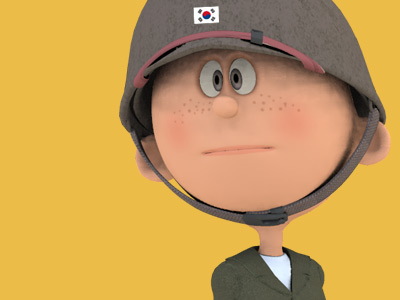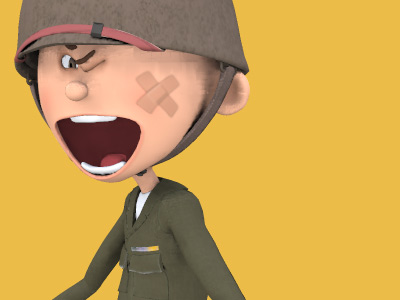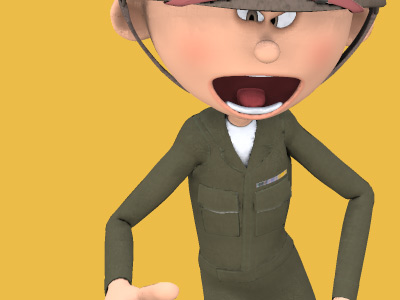Korean War 한국전쟁 (1950-1953)
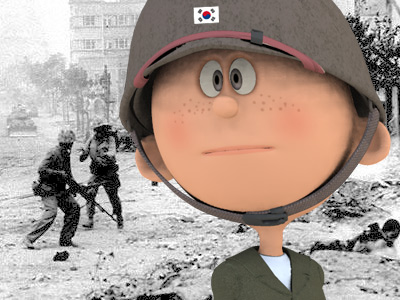
Fighting around the 38th parallel (January – June 1951)
With Lieutenant-General Matthew Ridgway assuming the command of the U.S. Eighth Army on 26 December, the PVA and the KPA launched their Third Phase Offensive (also known as the "Chinese New Year's Offensive") on New Year's Eve of 1950. Utilizing night attacks in which UN Command fighting positions were encircled and then assaulted by numerically superior troops who had the element of surprise, the attacks were accompanied by loud trumpets and gongs, which fulfilled the double purpose of facilitating tactical communication and mentally disorienting the enemy. UN forces initially had no familiarity with this tactic, and as a result some soldiers panicked, abandoning their weapons and retreating to the south. The Chinese New Year's Offensive overwhelmed United Nations (UN)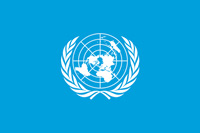 United Nations (UN) is an intergovernmental organization whose stated purposes are to maintain international peace and security, develop friendly relations among nations, achieve international cooperation, and be a centre for harmonizing the actions of nations. The UN was established after World War II with the aim of preventing future world wars, succeeding the League of Nations, which was characterized as ineffective. forces, allowing the PVA and KPA to conquer Seoul for the second time on 4 January 1951.
United Nations (UN) is an intergovernmental organization whose stated purposes are to maintain international peace and security, develop friendly relations among nations, achieve international cooperation, and be a centre for harmonizing the actions of nations. The UN was established after World War II with the aim of preventing future world wars, succeeding the League of Nations, which was characterized as ineffective. forces, allowing the PVA and KPA to conquer Seoul for the second time on 4 January 1951.
These setbacks prompted General MacArthur to consider using nuclear weapons against the Chinese or North Korean North Korea, officially the Democratic People's Republic of Korea (DPRK) is a country in East Asia, in the northern part of the Korean Peninsula. The capital and largest city is Pyongyang. The Korean Demilitarized Zone marks the boundary between North Korea and South Korea. The legitimacy of this border is not accepted by either side, as both states claim to be the legitimate government of the entire peninsula. interiors, with the intention that radioactive fallout zones would interrupt the Chinese supply chains. However, upon the arrival of the charismatic General Ridgway, the esprit de corps of the bloodied Eighth Army immediately began to revive.
North Korea, officially the Democratic People's Republic of Korea (DPRK) is a country in East Asia, in the northern part of the Korean Peninsula. The capital and largest city is Pyongyang. The Korean Demilitarized Zone marks the boundary between North Korea and South Korea. The legitimacy of this border is not accepted by either side, as both states claim to be the legitimate government of the entire peninsula. interiors, with the intention that radioactive fallout zones would interrupt the Chinese supply chains. However, upon the arrival of the charismatic General Ridgway, the esprit de corps of the bloodied Eighth Army immediately began to revive.
UN forces retreated to Suwon in the west, Wonju in the center, and the territory north of Samcheok in the east, where the battlefront stabilized and held. The PVA had outrun its logistics capability and thus were unable to press on beyond Seoul as food, ammunition, and matériel were carried nightly, on foot and bicycle, from the border at the Yalu River to the three battle lines. In late January, upon finding that the PVA had abandoned their battle lines, General Ridgway ordered a reconnaissance-in-force, which became Operation Roundup (5 February 1951). A full-scale X Corps advance proceeded, which fully exploited the UN Command's air superiority, concluding with the UN reaching the Han River and recapturing Wonju.
After cease-fire negotiations failed in January, the United Nations General Assembly passed Resolution 498 on 1 February, condemning PRC as an aggressor, and called upon its forces to withdraw from Korea.
In early February, the South Korean 11th Division ran the operation to destroy the guerrillas and their sympathizer citizens in Southern Korea. During the operation, the division and police conducted the Geochang massacre and Sancheong-Hamyang massacre. In mid-February, the PVA counterattacked with the Fourth Phase Offensive and achieved initial victory at Hoengseong. But the offensive was soon blunted by the IX Corps positions at Chipyong-ni in the center. The United States The United States of America (U.S.A. or USA), commonly known as the United States (U.S. or US) or America, is a country in North America. It is the world's third-largest country by both land and total area. The United States shares land borders with Canada to its north and with Mexico to its south. The national capital is Washington, D.C., and the most populous city and financial center is New York City. 2nd Infantry "Warrior" Division's 23rd Regimental Combat Team and the French Battalion fought a short but desperate battle that broke the attack's momentum. The battle is sometimes known as the Gettysburg of the Korean War. 5,600 Korean, American, and French troops were surrounded on all sides by 25,000 Chinese. United Nations forces had previously retreated in the face of large Communist forces instead of getting cut off, but this time they stood and fought, and won.
The United States of America (U.S.A. or USA), commonly known as the United States (U.S. or US) or America, is a country in North America. It is the world's third-largest country by both land and total area. The United States shares land borders with Canada to its north and with Mexico to its south. The national capital is Washington, D.C., and the most populous city and financial center is New York City. 2nd Infantry "Warrior" Division's 23rd Regimental Combat Team and the French Battalion fought a short but desperate battle that broke the attack's momentum. The battle is sometimes known as the Gettysburg of the Korean War. 5,600 Korean, American, and French troops were surrounded on all sides by 25,000 Chinese. United Nations forces had previously retreated in the face of large Communist forces instead of getting cut off, but this time they stood and fought, and won.
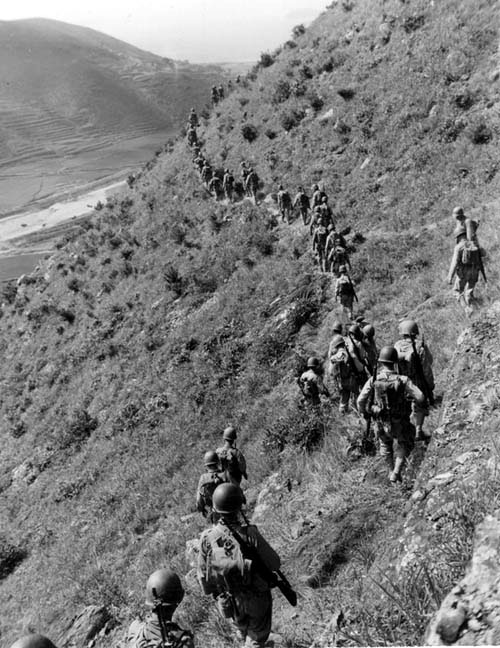
U.S. Marines move out over rugged mountain terrain while closing with hostile North Korean forces
In the last two weeks of February 1951, Operation Roundup was followed by Operation Killer, carried out by the revitalized Eighth Army. It was a full-scale, battlefront-length attack staged for maximum exploitation of firepower to kill as many KPA and PVA troops as possible. Operation Killer concluded with I Corps re-occupying the territory south of the Han River, and IX Corps capturing Hoengseong. On 7 March 1951, the Eighth Army attacked with Operation Ripper, expelling the PVA and the KPA from Seoul on 14 March 1951. This was the city's fourth conquest in a year's time, leaving it a ruin; the 1.5 million pre-war population was down to 200,000, and people were suffering from severe food shortages.
On 1 March 1951, Mao sent a cable to Stalin, in which he emphasized the difficulties faced by Chinese forces and the urgent need for air cover, especially over supply lines. Apparently impressed by the Chinese war effort, Stalin finally agreed to supply two air force divisions, three anti-aircraft divisions, and six thousand trucks. PVA troops in Korea continued to suffer severe logistical problems throughout the war. In late April Peng Dehuai sent his deputy, Hong Xuezhi, to brief Zhou Enlai in Beijing. What Chinese soldiers feared, Hong said, was not the enemy, but that they had nothing to eat, no bullets to shoot, and no trucks to transport them to the rear when they were wounded. Zhou attempted to respond to the PVA's logistical concerns by increasing Chinese production and improving methods of supply, but these efforts were never completely sufficient. At the same time, large-scale air defense training programs were carried out, and the Chinese Air Force began to participate in the war from September 1951 onward.
On 11 April 1951, Commander-in-Chief Truman relieved the controversial General MacArthur, the Supreme Commander in Korea. There were several reasons for the dismissal. MacArthur had crossed the 38th parallel in the mistaken belief that the Chinese would not enter the war, leading to major allied losses. He believed that whether or not to use nuclear weapons should be his own decision, not the President's. MacArthur threatened to destroy China unless it surrendered. While MacArthur felt total victory was the only honorable outcome, Truman was more pessimistic about his chances once involved in a land war in Asia, and felt a truce and orderly withdrawal from Korea could be a valid solution. MacArthur was the subject of congressional hearings in May and June 1951, which determined that he had defied the orders of the President and thus had violated the U.S. Constitution. A popular criticism of MacArthur was that he never spent a night in Korea, and directed the war from the safety of Tokyo.
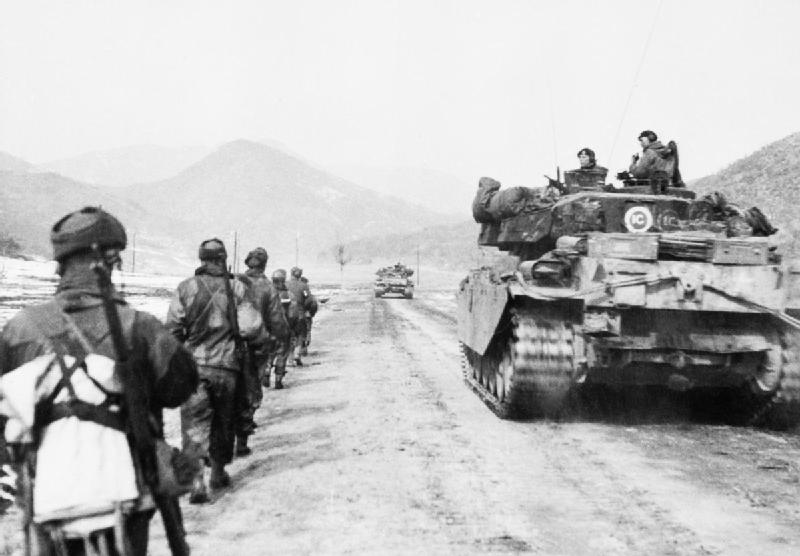
Centurion tanks and infantry of the Gloucestershire Regiment advancing to attack Hill 327 in Korea, March 1951. Centurion tanks and men of the Gloucestershire Regiment advancing to attack Hill 327 in Korea.
General Ridgway was appointed Supreme Commander, Korea; he regrouped the UN forces for successful counterattacks, while General James Van Fleet assumed command of the U.S. Eighth Army. Further attacks slowly depleted the PVA and KPA forces; Operations Courageous (23–28 March 1951) and Tomahawk (23 March 1951) were a joint ground and airborne infilltration meant to trap Chinese forces between Kaesong and Seoul. UN forces advanced to "Line Kansas", north of the 38th parallel. The 187th Airborne Regimental Combat Team's ("Rakkasans") second of two combat jumps was on Easter Sunday, 1951, at Munsan-ni, South Korea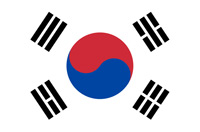 South Korea officially the Republic of Korea (ROK), is a country in East Asia, constituting the southern part of the Korean Peninsula and sharing a land border with North Korea. Since the 21st century, South Korea has been renowned for its globally influential pop culture, particularly in music (K-pop), TV dramas (K-dramas) and cinema, a phenomenon referred to as the Korean wave. , codenamed Operation Tomahawk. The mission was to get behind Chinese forces and block their movement north. The 60th Indian Parachute Field Ambulance provided the medical cover for the operations, dropping an ADS and a surgical team and treating over 400 battle casualties apart from the civilian casualties that formed the core of their objective as the unit was on a humanitarian mission.
South Korea officially the Republic of Korea (ROK), is a country in East Asia, constituting the southern part of the Korean Peninsula and sharing a land border with North Korea. Since the 21st century, South Korea has been renowned for its globally influential pop culture, particularly in music (K-pop), TV dramas (K-dramas) and cinema, a phenomenon referred to as the Korean wave. , codenamed Operation Tomahawk. The mission was to get behind Chinese forces and block their movement north. The 60th Indian Parachute Field Ambulance provided the medical cover for the operations, dropping an ADS and a surgical team and treating over 400 battle casualties apart from the civilian casualties that formed the core of their objective as the unit was on a humanitarian mission.
The Chinese counterattacked in April 1951, with the Fifth Phase Offensive, also known as the Chinese Spring Offensive, with three field armies (approximately 700,000 men). The offensive's first thrust fell upon I Corps, which fiercely resisted in the Battle of the Imjin River (22–25 April 1951) and the Battle of Kapyong (22–25 April 1951), blunting the impetus of the offensive, which was halted at the "No-name Line" north of Seoul. On 15 May 1951, the Chinese commenced the second impulse of the Spring Offensive and attacked the ROK Army and the U.S. X Corps in the east at the Soyang River. After initial success, they were halted by 20 May. At month's end, the U.S. Eighth Army counterattacked and regained "Line Kansas", just north of the 38th parallel. The UN's "Line Kansas" halt and subsequent offensive action stand-down began the stalemate that lasted until the armistice of 1953.
HISTORY
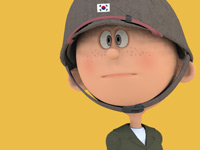
RESOURCES
This article uses material from the Wikipedia article "Korean War", which is released under the Creative Commons Attribution-Share-Alike License 3.0.
© Stories Preschool. All Rights Reserved.
